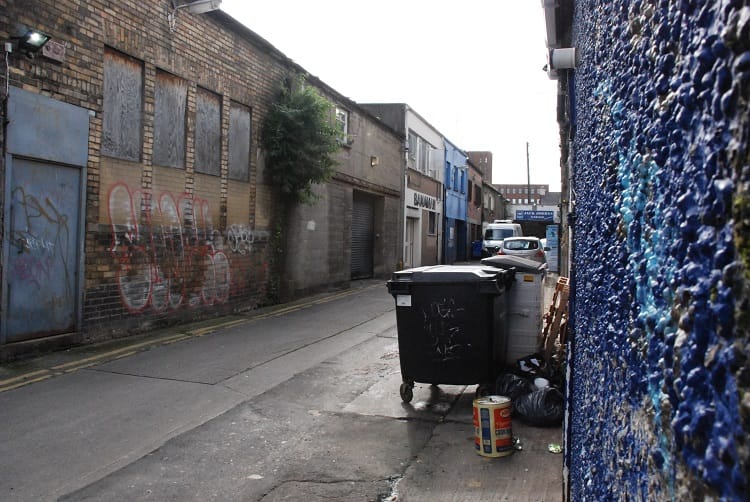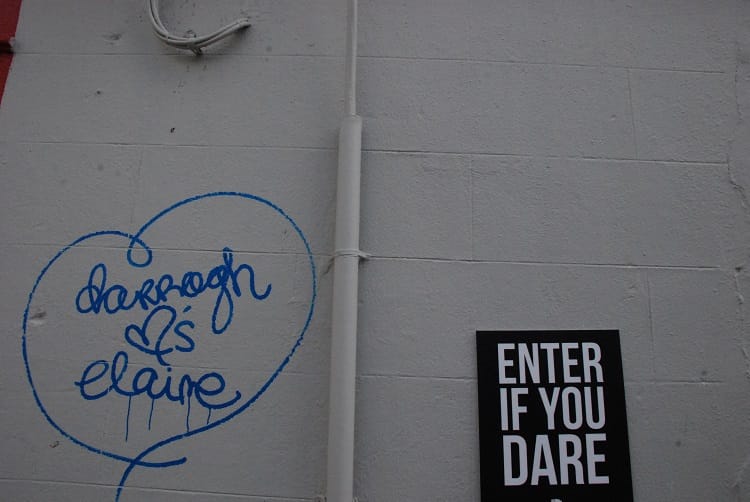From a Dublin base, an anti-caste influencer grows a global audience
In less than two years, Amit Wasnik has attracted tens of thousands of online followers with his posts focused on the life and ideas of BR Ambedkar.
What is it about the pubs-and-clubs parts of town that makes people want to urinate outside?

“Hold this,” says the lad, decked in chequered shirt and corduroy trousers.
He hands a plastic bag to his friend before nipping down Montague Lane with two other mates. The fourth stands awkwardly near Gerry’s Café, bag in hand.
It’s 10:30pm, the middle of Montague Street on a Saturday. Noisy crowds head towards the clubs of Harcourt Street. Others spill out from the pubs of Camden Street.
There is a late-evening chill but it doesn’t deter the multitude of full-bladdered men who, when opportunity presents itself, duck aside to relieve themselves in the shadows.
Despite regular complaints over the years, there seems to be little progress on dealing with the public urination that seems endemic to parts of the city – and some councillors say it’s about time to try more innovative solutions.
“It’s become an actual public health issue now,” says Independent Councillor Mannix Flynn. “This is the order of the day. I’ve seen people walk out of public houses and actually urinate [nearby].”
On Saturday, nobody seems too keen to discuss at length the act itself.
“Because I can,” says one young lad as he heads from Montague Street towards the nightclub Copper Face Jacks on Harcourt Street on Saturday night.
But Dublin might learn from research done elsewhere. For several weeks, Amsterdam-based psychologist Randy Bloeme examined the various reasons why people decide to urinate outdoors in busy nightlife districts.
Bloeme and three others studied the habits of those on nights out in Amsterdam, and tested out measures to alleviate the problem of public urination.
People behave differently in a social nightlife setting, says Bloeme. “People have different expectations about social norms.”

Also, the more streetscapes around clubs and pubs become a gathering place for drinking, smoking or simply socialising, the less people are inclined to use provided facilities.
Using these might mean long queues or clogged loos, says Bloeme. And it means time away from friends, he says. In other words, easier to simply nip around a corner or duck down a laneway.
If nearby facilities are scarce, in other words there is a lack of public toilets, the streetscape becomes the facility, says Bloeme.
Over several weeks Bloeme found that, like Montague Lane, most people on nights out have the decency to relieve themselves down alleyways rather than on main streets.
But behaviour like public urination is simply not confronted enough by either local residents or authorities in Amsterdam, says Bloeme. “People urinate on the street and then they’re gone. So they don’t think anything of it afterwards.”
If there are no consequences, once a few pints deep, public urination seems an inevitability in urban settings, he says. Some people don’t care.
There’s something in that, says Paul Hegarty, a urology specialist at the Mater Private in Dublin.
Alcohol leads to the production of urine which, as a result, leads to an increase in “urinary urgency”, says Hegarty – but there’s also a loss of inhibitions associated with alcohol consumption.
That might help explain why, with a dozen pubs and clubs on Camden Street and Wexford Street alone, some still choose the outdoors.
“There’s a sensor in the frontal part of the brain where we learn to socialise when we’re toddlers,” he says. “We can lose that socialisation for certain reasons, particularly when people become elderly. But also, under the effect of alcohol, people become less inhibited.”
That’s not justifying the practice, says Hegarty. But it might help explain some of Dublin’s stale-smelling lanes and alleyways.
From Harcourt Street come two lads, laughing loudly, one with his arm slung over the other’s shoulder.
The shorter one, in a leather jacket, dips down Montague Lane and emerges one minute later before the two continue off in the direction of Camden Street.
What makes them do it? The wind picks up but the answers remain the same, ranging from the affronted “So what?” to the practical. In other words, I’m bursting.
The constellation of issues – the loss of inhibitions, the altered streetscape and the lack of public toilets – means that public urination isn’t easy to tackle, says Bloeme.
But there are some practical, easy interventions that have been shown to have tempered the trend a bit.
He and his team put a small public toilet halfway down an alleyway, just off a small square in the centre of Amsterdam, near the busy Leidseplein district.

Revellers still had a choice, he says. They could choose to continue down the alley to relieve themselves or use the temporary public toilet.
At first count, there was an average drop of 40 percent in those opting for the alley, he said. Some, however, were so drunk they simply didn’t notice the lavatory.
“So then we thought we obviously need to do something for the people who are not able to easily notice the toilet,” he says.
The next week, he and his colleagues painted large, yellow arrows on the street and stood nearby to direct people towards the public toilet.
They also lit up the alleyway. These added measures led to a further 15 to 20 percent reduction in those publicly urinating, says Bloeme.
This proves, says Bloeme, that “most people are willing” to use a toilet if one is provided and easily accessible. But, he admits, it’s mostly men who frequent the laneways to begin with and some simply aren’t going to care.
Given that the public toilets in Amsterdam are predominantly urinals, women there haven’t it easy either, says Bloeme.
There are 35 public urinals for men and just three toilets for women in Amsterdam city centre, so men have an easier time of it, he said. “It’s in some way, somehow, socially accepted for men.”
Hegarty agrees. “The question is how come it’s a particularly male problem, less of a female problem?” he asks. “That’s the psychology of impulse control, though, that males have more issues with it than females.”
Beyond Montague Street and Montague Lane, there are many more alleyways and side-streets where people duck to pee, says Independent Councillor Flynn.
The current Dublin City Development Plan, which sets out a blueprint for what should happened where in the city, includes a commitment to work “to provide for appropriately
located, independently accessible sanitary facilities”.
But the council is still reticent to install public toilets, says Flynn, and the Gardaí take a soft policing approach to the problem.
A lack of implementation and enforcement has created “a culture of using the public domain as a lavatory,” says Flynn.
(An Garda Síochána didn’t respond to requests for figures relating to fines or cautions issued for public urination.)
There haven’t been any particularly innovative solutions put forward in Dublin as yet. But they are needed, says Fine Gael Councillor Kieran Binchy.
Dublin City Council currently cleans up after public urination where it can, he says.
But the problems with reinstalling public toilets remain the costs and maintenance, and the issue of anti-social behaviour. “They become a magnet for problems,” says Binchy.
He wants to revisit the idea that the council would look to local businesses, pubs and clubs, and give them an incentive, such as a rates reduction, to make their toilets available to all the public rather than customers only.
“It’s a proposal that I’ve brought forward before. It hasn’t gained much traction but I think that it’s a way of dealing with public urination,” says Binchy.
While these kinds of practical interventions may help, there will often be the hurdle that public urination is often the easiest option for many, says Bloeme.
When people go out, they’ve got certain intentions, he says. “Their main goal for the night is to entertain themselves.”
So when it comes to the point where somebody needs to go to the toilet? “That’s a type of behaviour you’ve to conduct that doesn’t fit in with your main goals at that point. Urinating outdoors is the fastest option,” he says.